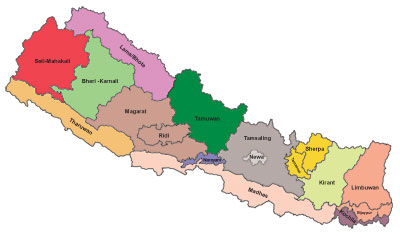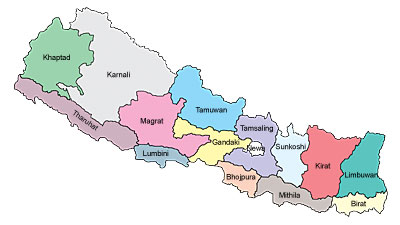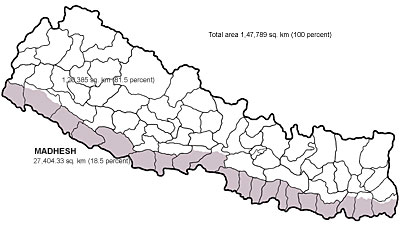 |
The Maoist model (above) proposes 14 provinces and sub-provinces, with 800 to 900 districts so people will have easy access to district headquarters. Most of the proposed provinces would be named after ethnicities, though the Maoists insist they are based on the idea of 'nationalities'. There are still internal differences within the party on proposed state boundaries. Regional, topographical and administrative viability have also been considered.?
The UML (below) has proposed 15 provinces on the basis of ethnicity as well as linguistic, cultural, geographical and historical factors. The party's draft takes into consideration economic viability, infrastructural development, natural resources and administrative accessibility.
 |
The Madhesi Janadhikar Forum has a one-point agenda of the One Madhes Prades, comprising the Tarai from Jhapa in the east to Kanchanpur in the west, with the Siwalik hills as the northern border. The proposed province (below, shaded) comprises 18.5 per cent of the country's total area. The party has not elaborated on the hill and mountain regions. It acknowledges 'ethnicity, language, culture, geographical and historical continuity' as the major basis for creating provinces, and notes the need to consider economic interrelation, infrastructural development, natural resources and administrative accessibility.
 |
The NC has proposed that federalism reflect geographical, cultural, ethnic identity and demographic diversity, taking into account economic viability and co-relation, and regional and local autonomy with decentralisation. Its proposal envisions dividing the nation into federal, provincial and local structures, but opposes the idea of ethnicity as the major basis. However, its concept paper is silent on the shape, size and number of provinces to be created. The party has stressed the need to form a State Restructuring Commission to demarcate provincial structures.


